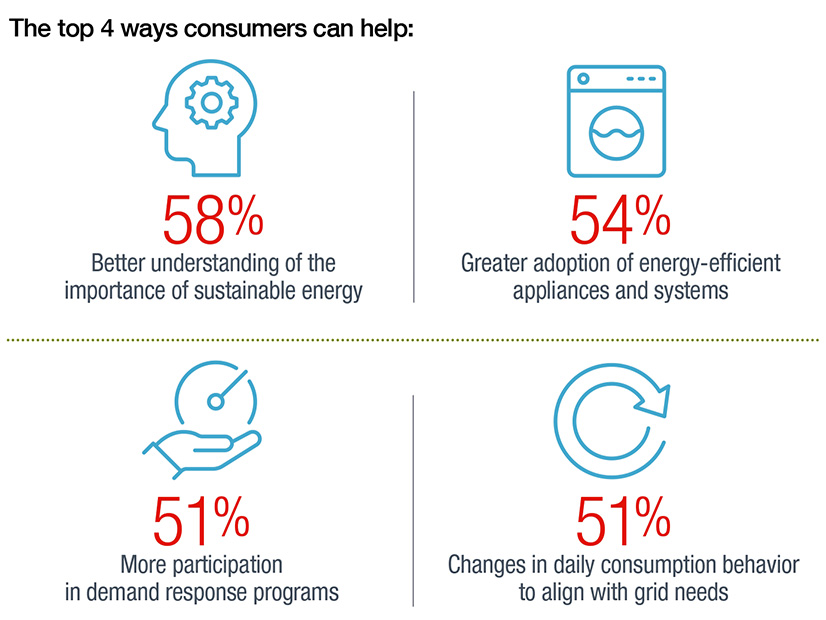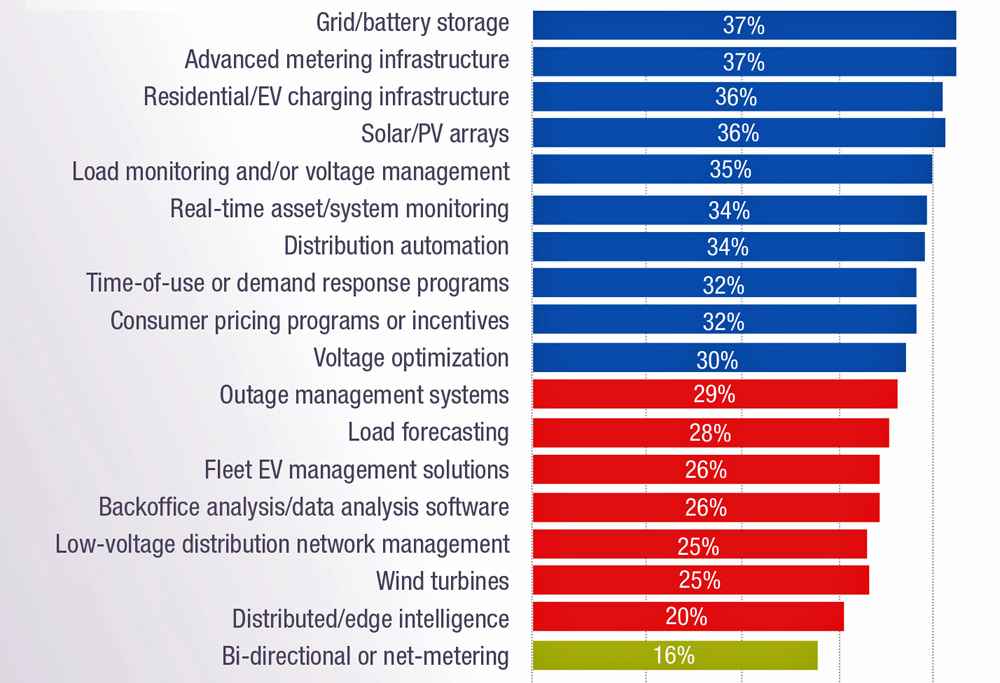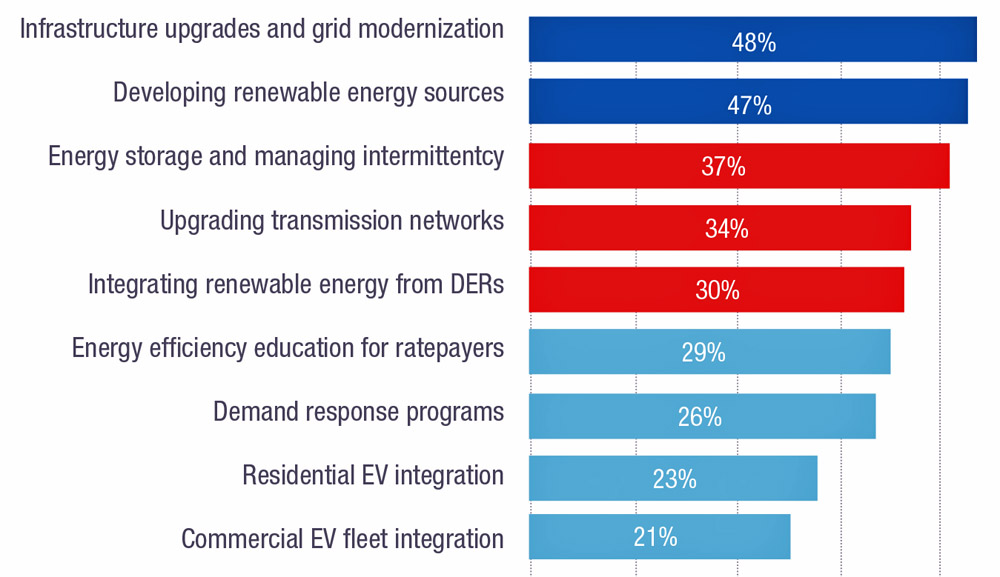
Utilities and their regulators shared their thoughts for a new report on the challenges and opportunities facing the industry as the clean energy transition places a growing reliance on distributed energy resources.
Itron published its 2023 Resourcefulness Insight Report on Oct. 25. The utility management technology company drew on the input of 250 U.S. utility executives and 10 state-level utility commissioners for the report.
“Powering the Energy Transition: Insights from Utilities and Commissioners on Creating the Future U.S. Grid” reports that 88% of the executives call the transition extremely or very important, and that seven of the commissioners say their state’s policies support the transition.
But only 45% of the utilities are actively addressing the transition. Nearly half — 49% — are still in the planning stages, and most of those are only in the early stages. The remaining handful have not yet begun to plan.
Itron CEO Tom Deitrich noted in his introduction the rapidly growing power demand of electric vehicles and electrified buildings and said grid capacity must expand just as dramatically and quickly while providing uninterrupted service from an increasingly intermittent generation portfolio.
“And while many likely see in the energy transition a burdensome challenge,” he wrote, “still others see what we see: an opportunity to build a more responsive and intelligent grid that serves communities better and more efficiently than ever before.”
The report looks from multiple angles at the many-dimensional challenge that is utility and grid planning in the 2020s: balancing supply, demand, finances, reliability, regulation, customer expectations and technology limitations to keep the lights on and save the planet in a sustainable and affordable manner.
The report also found that:
-
- 59% of cooperative-owned utilities rank the transition as extremely important, compared with 34% of those municipal-owned and 33% of investor-owned.
- Utility executives split almost evenly when asked to identify the key driver behind the transition: 37% said public demand, 36% cost savings and 34% environmental concerns.
- 61% of utilities say their state’s policies support transition initiatives, and 20% say they hinder progress; policies are rated most supportive in the Midwest (70%) and least in the South (54%).
- Utilities in the West are leading their counterparts elsewhere — 12% say they have fully implemented their transition plans, and 47% are currently doing so. The Northeast is second on both counts.
- 43% of utilities say their customers are a critical part of the solution — driving demand for renewable energy, DERs and energy-efficiency measures — and can significantly impact the success of the transition.
- Top considerations in utilities’ decision-making process are reliability (76%), safety (70%) and sustainability; resilience (43%) and equitable access (42%) are at the bottom of the list.
- Technical investments are interwoven and often difficult to pursue individually, but infrastructure upgrades/grid modernization tops the list of priorities at 48%, with developing renewable energy resources close behind at 47%; residential and commercial EV integration lag at 23% and 21%, respectively.
- Utilities reported a tight range of technologies already adopted, including battery storage and advanced metering (37% each); solar arrays and residential EV charging (36% each); and various types of load monitoring or management (32 to 35%). Lagging were distributed/edge intelligence (20%) and bidirectional or net metering (16%).
- Utility priorities for the next five years are load monitoring/voltage management (22%), solar arrays (22%), consumer pricing initiatives (21%), distribution automation (21%) and grid/battery storage (20%); bidirectional or net metering again bring up the rear, at just 6%.
All of this, the report concludes, makes the case for utilities drawing up a full to-do list — particularly the 32% of utilities that are only in the early stages of planning. It suggests that utilities take stock of the current state of affairs; lay the foundation for a customized transition; consider how the business will change; present a compelling case for making those changes; and seek out partners with expertise.
“This year’s report underscores the pivotal moment we’re at in shaping the future of the U.S. grid,” Itron Vice President Marina Donovan said in the official announcement of the report. “Utilities have a critical role to play in accelerating the energy transition, and stakeholder education is an important part of that effort. By educating consumers, policymakers and regulators about clean energy, conservation and energy management programs, utilities can help overcome these challenges.”




